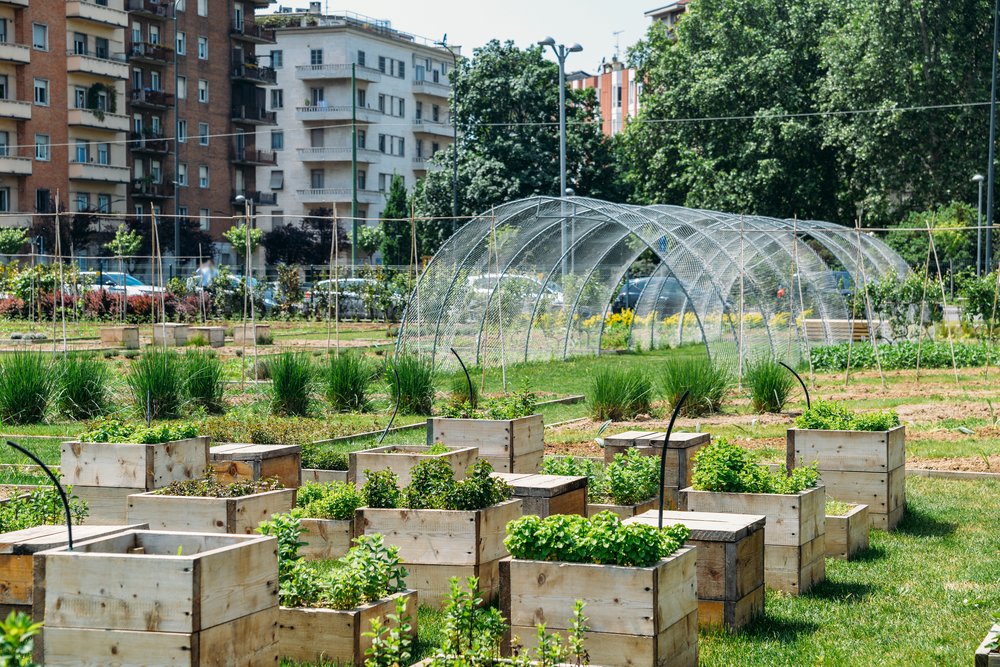Imagine if every home had a garden which can produce food enough for every meal? Instead of flowers and koi carps, we’ll have fresh fruits, vegetables, and edible fishes. Instead of green lawns, we’ll have plots and mini-farms in our backyard.
Isn’t that beautiful? This is what the world would be like if urban farming became a global practice. Urban farming is the process of growing and distributing food in urban areas. It involves all kinds of farms (not just vegetables and fruits), such as animal farms, aqua farms, bee farms, and more. Now that the urban population is growing more than twice as fast as the rural population, it’s incredibly important to start investing in solutions to make cities more sustainable.
Amazing Benefits of Urban Farming
Healthy and Affordable Food
One of the major benefits of urban farms is the production of low-cost yet healthy food. In a world where fast food and instant meals are chosen over high-quality and healthy food, locally grown green produce can be a game-changer.
Growing food where it’s consumed can significantly lower its price. There will be no extra transportation-related costs. This will encourage people to buy healthy food instead of relying mostly on unhealthy and heavily processed food.
Biodiversity
Urban farms can serve as habitat for different species. It will attract various pollinators which can increase the local biodiversity (birds, bees, bats, and butterflies). It can also provide more complex vegetation structure and more foraging opportunities. Furthermore, replacing laws with gardens can increase habitat heterogeneity which increases wildlife diversity.
Food security
Urban farming is believed to be a great solution to food security. Researchers found that if fully implemented in cities around the world, urban farms can produce as much as 180 million tonnes of food a year. It can also contribute to up to 10% of the global output of legumes, roots, tubers, and vegetable crops.
Income Generating
Urban farms will provide various new green jobs. In apartments and areas where space is limited, urban growers use their roof space to create rooftop gardens. This helps them provide free food for the household and even sell extra produce for extra income. With correct execution, rooftop gardens can also increase thermal comfort in apartments under it.
Education
Many people today don’t know where their food comes from. They don’t know how to distinguish a vegetable from a fruit, a berry from a root crop. Urban farms can change that. These simple but amazing city farms can help people of all ages learn more about the food they eat.
Healthy Hobby
Urban farming can also be a great hobby to learn. As we become more and more dependent on technology, we need more offline hobbies that allow us to reconnect with ourselves and embrace nature.
Eco-Conscious Living
They can also help people gain important knowledge about conservation, recycling, and healthy living. This will result in the reduction of food waste and the promotion of an eco-conscious lifestyle. Lots of urban growers also provide workshops where people can share knowledge, raise awareness, and learn to farm together.
Job Creation
Urban farming and agriculture can increase city production, processing, packaging, and marketing. This results in the growth of entrepreneurial activities and the creation of green jobs. The construction of larger urban farms will also provide employment and better accessibility to food for the urban population.
Build Community
People living in urban areas have forgotten what it means to be part of a community. Most of them live their lives independently. This results in loneliness and depression. Urban gardening can help bring people together and promote connection.
Environmental Protection
Urban farming promotes the protection of our environment by reducing pollution caused by agricultural farms. It will also reduce fuel use by reducing transportation as people support and buy food in their area. Since most urban growers don’t use harmful pesticides in their plants, this will help provide more high-quality food on our table.
Conclusion: The Current State and Future of Urban Farming
The problem with most urban gardens today is that they’re mostly focused on beautifying cities and strengthening community, rather than subsistence farming. This is understandable knowing how it’s hard to find space to grow vegetables in the cities. This is why urban farming projects need to be more creative.
Growing food in our cities is a great way of providing locally produced food to urban dwellers. It has great potential in providing food and ensuring sustainable distribution and production. It can create green jobs and other employment opportunities.
Although only leafy greens such as kale, spinach, and herbs are providing sustainable business to large urban farms, there’s an ongoing evolution to urban farming which may soon make other crops such as grains, potatoes, more financially viable. Sooner or later urban farming will be our last resort when faced with a global food security crisis.
